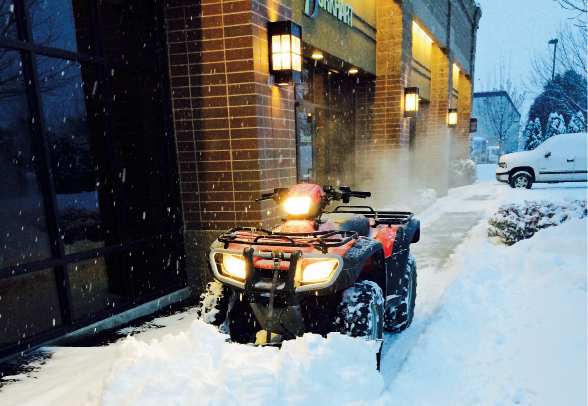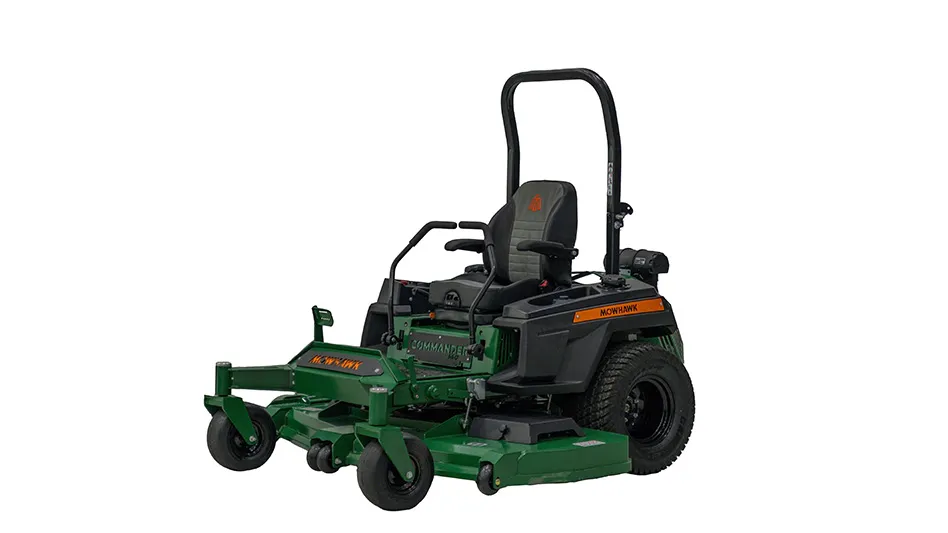
For many landscape contractors based in the eastern United States, snow management is a staple service. But not in Idaho, says Levi Duckett, president of Sunshine Landscape, a commercial landscape services company.
“It’s not a consistently reliable revenue driver. The price can be good when there’s a lot of snow, but we haven’t had a year like that for at least five years,” he says.
“Most of our revenue on the snow removal is driven off of deicing and what I would call ice management.” Still, Duckett says he has offered the service since 2007 and will continue to do so for the foreseeable future.
Of his 45 employees, about seven work full time in the winter. Additional workers are called in as needed for snow and ice removal events. All of Sunshine Landscape’s customers are commercial and last year the company brought in $2.4 million. Of that amount, in 2015 about $100,000 was snow and ice removal work.
“Most of our properties that we do snow removal are just an add-on service to our landscape maintenance contracts,” Duckett says, adding that the company’s clients come from word of mouth and some door-to-door sales.
The company provides grounds maintenance and landscape construction in addition to snow and ice removal.
Clients include the government, such as the Idaho State Capital, a regional hospital and a commercial bank.
A quick burst.
Because the winter season in Idaho is both short and unpredictable, Duckett says he charges for snow removal work per event or by the hour.
“Our customers just don’t want to pay for it unless it actually happens,” he says.

Duckett says the season only runs about two months, December and January. On occasion he has had crews out for November or March snowstorms, but not regularly.
“By March, we’re landscaping hot and heavy here,” he says, adding that this past winter was so mild, crews began landscaping work the first of February.
Snow and ice management contracts are usually finalized by mid-October and trucks are ready mid-November.
“It is hard for us though because we use those same trucks for landscaping,” Duckett says. “On our maintenance side, we’ll be doing leaf cleanup sometimes clear into December.”
In order to combat this unpredictability, Duckett says he usually hooks up one to two plow trucks by mid-November “just in case.” The rest of the fleet continues with end of season landscaping and cleanup.
mother nature’s mercy.
Business is most lucrative when temps stay frigid.
“When it snows and then stays really cold, it doesn’t all melt right off,” Duckett says. “It warms up enough during the day that it melts in the parking lots and then we have to go back the next night and reapply deicer.” Sunshine Landscape is based in Meridian, Idaho, just outside of Boise. Most of the company’s work is performed within a populated area known as the Treasure Valley. This valley tends to warm up quickly after a snowfall, he says.
It may be freezing and snow overnight, but by noon it can warm up to 40 degrees or more, he adds.
This past season Duckett says his team only experienced two snow events. There were about 15 deicing events.
Managing manpower.
One to 2 inches will usually be enough to get the plows out, Duckett says. “We call in people when we need them. On a good storm we may have 30 people working,” he says. “I can’t keep my laborers on full time through the winter just to respond to snow removal because we don’t get enough of it to make that pay.”
Employees from the green season who offer to be available for snow removal work are used. They are guaranteed at least two hours of pay when they are called in, whether they end up working 30 minutes or the full two hours. During a hard snow, they may work a 17-hour shift. Most of the time, though, they will tend to work four to six hours per snow event, Duckett says. “The biggest challenge we face here with snow removal is keeping guys on board that want to do it because there’s no guarantee in the hours,” he says. “You may get nothing one week and 35 hours the next week.”
To combat this challenge, Duckett pays employees more per hour during the winter season and tries to offer an end-of-season bonus. “We’re really fair with them. We’re honest and up front. We pay them on time,” he says. “I think it’s the little things like that that they appreciate.”

Explore the October 2016 Issue
Check out more from this issue and find you next story to read.





